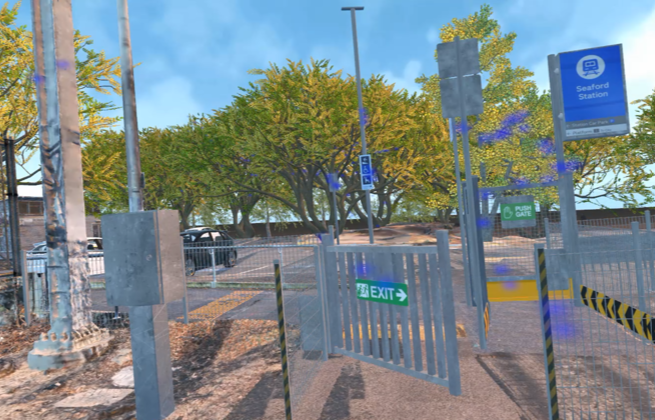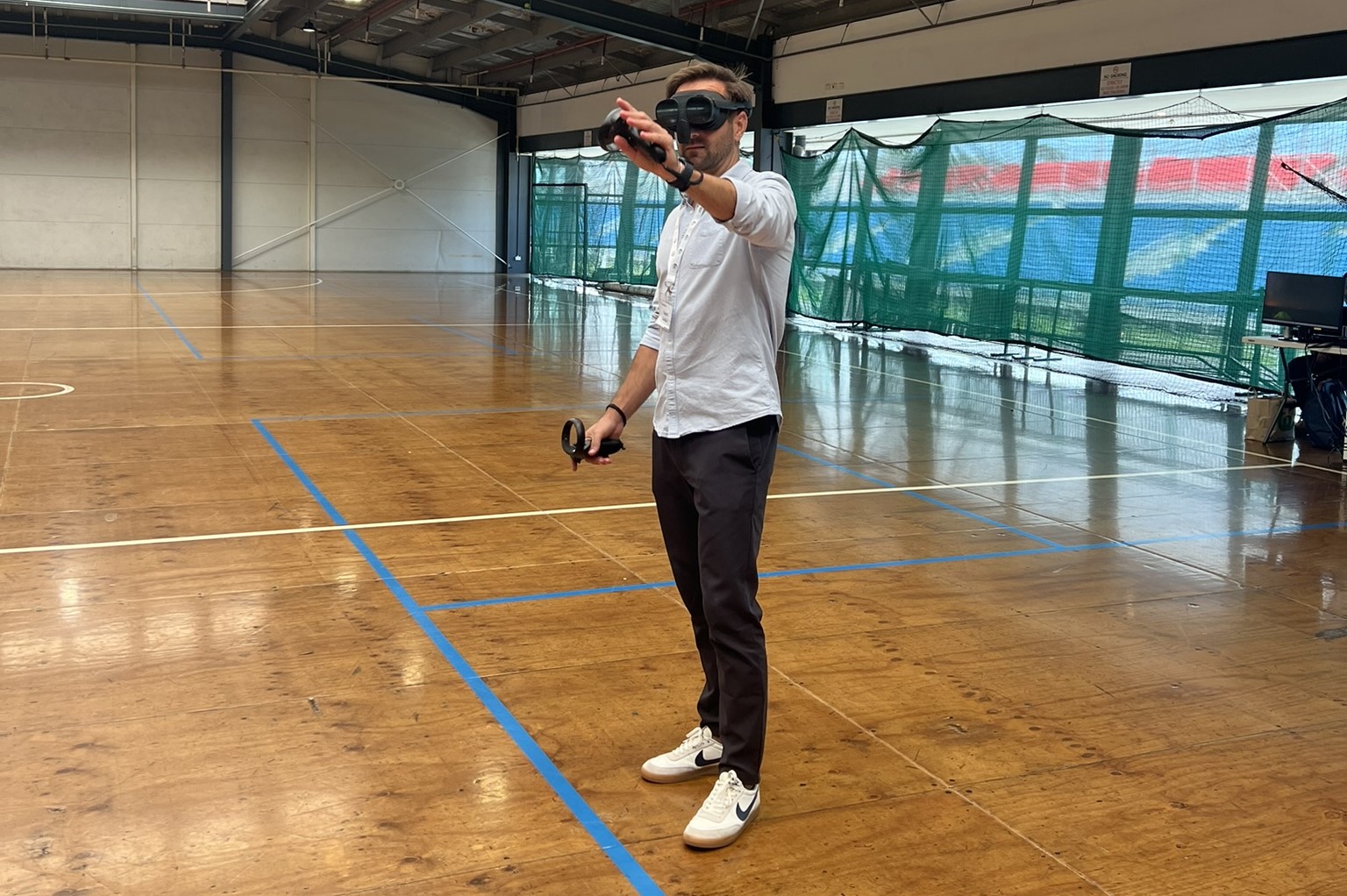Acmena human factors consultants conduct virtual reality trials of pedestrian level crossing designs for Victoria Department of Transport and Planning.
Held in partnership with drone and immersive reality specialists Air Inspect Australia, the week-long trial will see over 80 members of the public testing level crossing designs in a virtual environment.
Participants will experience a high-fidelity reproduction of the Seaford Station level crossing on Melbourne’s Frankston line, which was created with images captured by LIDAR-equipped drones used to scan the site.
Acmena has been engaged to provide human factors expertise for the design, planning and coordination of the trial, which will culminate in an evidence-based assessment of the various signage options for wayfinding the safest route across the level crossing and for operating the emergency exit.

“Using VR gives us the opportunity to study pedestrian behaviour without putting anyone in physical danger and lets us test out prototype design options without incurring manufacturing and installation costs,” said Acmena Principal Consultant, Grace Kennedy.
“These trials will help the client to further understand pedestrian behaviour and risk perception when navigating level crossings.”
The trials will also investigate the effect of mobile devices on distracting pedestrians on approach to level crossings.
Profile: Grace Kennedy | Principal Human Factors Consultant & David Goble | Senior Human Factors Consultant
Related Content: Victoria Active Pedestrian Level Crossing Review

